Adrift in the middle of the Pacific Ocean lies a tiny volcanic island that is home to the distinct Rapa Nui culture and harbors an incredible collection of Neolithic statues known as moai, that are found nowhere else in the world except the Easter Island. In this article, we will provide you with an ultimate guide to visiting Easter Island
The Ultimate Guide to Visiting the Easter Island
Easter Island – A Brief Introduction
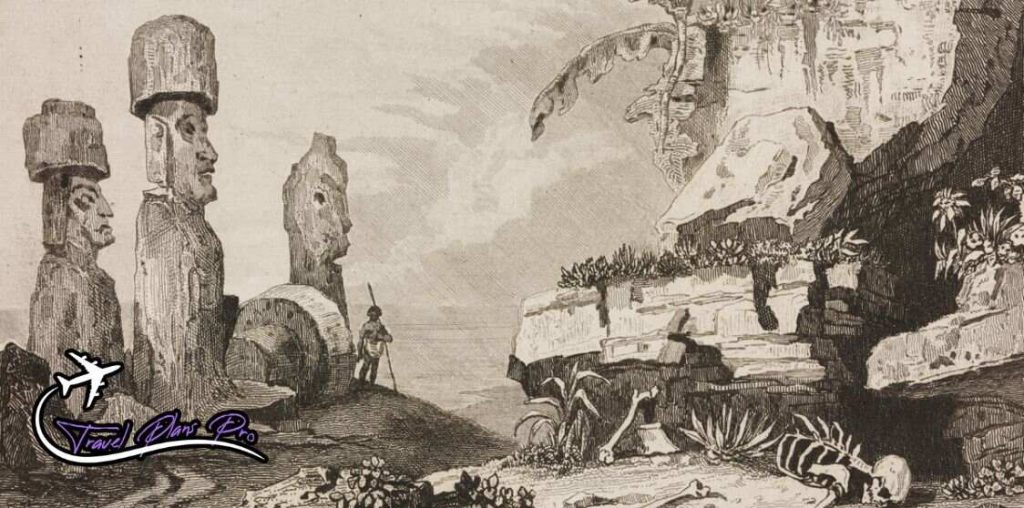
Easter Island, regarded as Rapa Nui by its indigenous residents is located thousands of miles west of mainland Chile. Home to 7,000 people, this tiny island harbors 400 or so moai, which are inscrutable monolithic statues that evoke a sense of awe and wonderment. Apart from the moai, the island is home to indigenous Rapa Nui, who make up half of its population, people from mainland Chile as well as some foreigners. The majority of the population in Easter Island reside in Hanga Roa, the island’s only town.
Easter Island was inhabited for the first time by Polynesian migrants around 1000 BCE. These migrants had some expert carvers among them who started to create the island’s signature statues soon after inhabitation. They created the statues in the shadow of their ancestors with the belief that they would watch over the islanders and provide protection. Unfortunately, the society was pushed into decline due to conflict, overpopulation, shortage of food, and deforestation.
In the year 1722, on Easter Sunday a Dutch sailor Jacob Roggeveen discovered the island and named it, Easter Island to commemorate the day he arrived at its shores. Christian missionaries founded the island in the 1860s, and in the year 1888, Chile eventually annexed the island. It took about 80 years for the Rapa Nui people to get full Chilean citizenship and the right to vote. However, today the Rapa Nui have a degree of autonomy over the island they call Te Pito o Te Henua which translates to the navel of the world. Nowadays the island is open to the public, and the Hanga Roa is adorned with great restaurants and lodging options.
Planning Your Visit to the Easter Island
Let’s get one thing out of the way, given the distance and the expensive flight tickets, you will most likely visit the island only once. So, when you do visit, make the most of it. At least spend three days on the Easter Island to take in all the key sites. However, if you can stay more than three days, please do, as it will allow you to not only explore the island at a leisurely pace, but you will also be able to fit in snorkeling, horse riding, and diving excursions.
For most nationalities, Chilean tourist visas are available on arrival at airports and land boarders, lasting for a period of 90 days. No special vaccinations are required to visit as the Easter Island and even mainland Chile are free of malaria and yellow fever. Hanga Roa also harbors a couple of banks with ATMs, and credit/debit cards are accepted by some bigger establishments, however, it is better to bring some cash. Also, Easter Island is a lot more expensive than mainland Chile, so come prepared.
Weather
Easter Island can be visited year-round as it has a warm, sub-tropical climate, with temperatures ranging between 61°F or 16°C and 77°F or 25°C, with December to April being the warmest period. Also, be sure to pack a rain jacket and an umbrella with you because rain comes quite unexpectedly to the island.
Getting There
Easter Island houses a tiny airport called Mataveri that lies just outside Hanga Roa. The only airline that serves the island is LATAM. LATAM has daily flights to and from Santiago, the capital of Chile, and weekly flights to and from Papeete in Tahiti. Most hotels also offer free airport pick-up and drop-off services. Apart from airplanes, the only other way to visit the island is via cruise.
Top 10 Best Luxury Cruise Lines
If you are thinking of going to Easter Island via a cruise then check out our article on the top 10 best luxury cruise lines, that will deliver you to the island in utmost luxury.
Transport Options
Most travelers prefer to explore the island on a guided tour. However, if you desire more freedom, you can hire a car, quad bike, or motorbike but keep in mind that there is no car insurance on Easter Island. Moreover, semi-feral horses can be a hazard for drivers. You can visit the closer sites on foot or bikes that are widely available for hire, but nothing beats horseback tours.
Easter Island – Attractions
The major attractions are obviously Easter Island’s many moai sites, but the island is also home to volcanic craters, beautiful beaches, cliff-top archeological sites, as well as diving spots. Let’s take a look at the top attractions you visit on your trip to Easter Island.
Ahu Tongariki
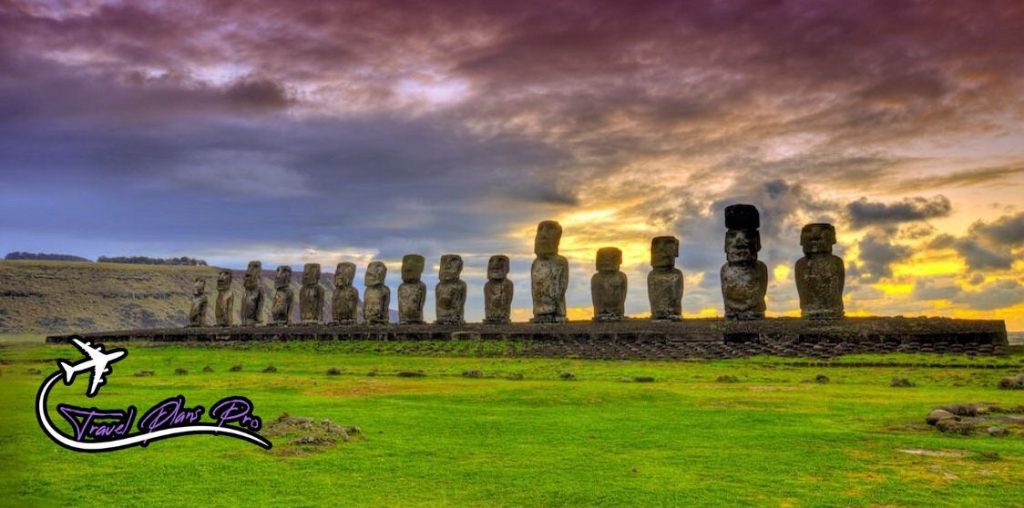
The most famous attraction on the island is the Ahu Tongariki, located on the east coast. Ahu Tongariki is a magnificent collection of about 15 huge moai, among which some even weigh 30 tons. These moai are lined up on a 650-foot ahu, or stone pedestal. In 1960, the statues were knocked over by a Tsunami, however, were returned to their rightful place in 1995. Also, if you want to witness the most beautiful sunrise of your life, then you better go to this place.
Rano Raraku
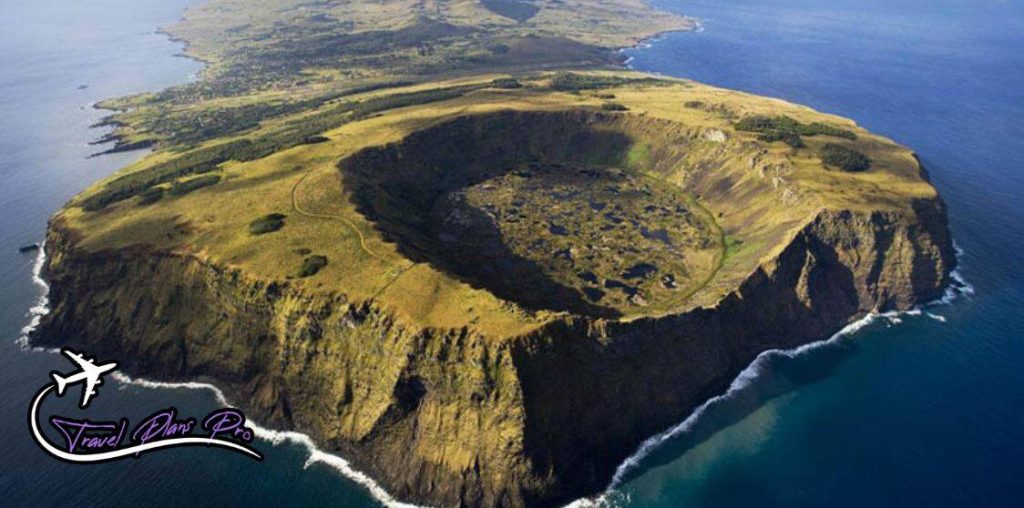
Just inland from Ahu Tongariki lies the volcanic crater of Rano Raraku where most of the moai were made. The moai were carved directly from the tuff and then transported around the island most probably on wooden sleds. However, several were left unfinished or weren’t carried to other sites as they were too heavy to move. Today you can see their heads poke out of the grassy slopes of Rano Raraku. Also keep an eye out for El Gigante or The Giant, even though it is hard to miss as it is over 65 feet and is the tallest moai ever carved. Sadly however it was never completed and is still attached to the rock face.
Anakena Beach
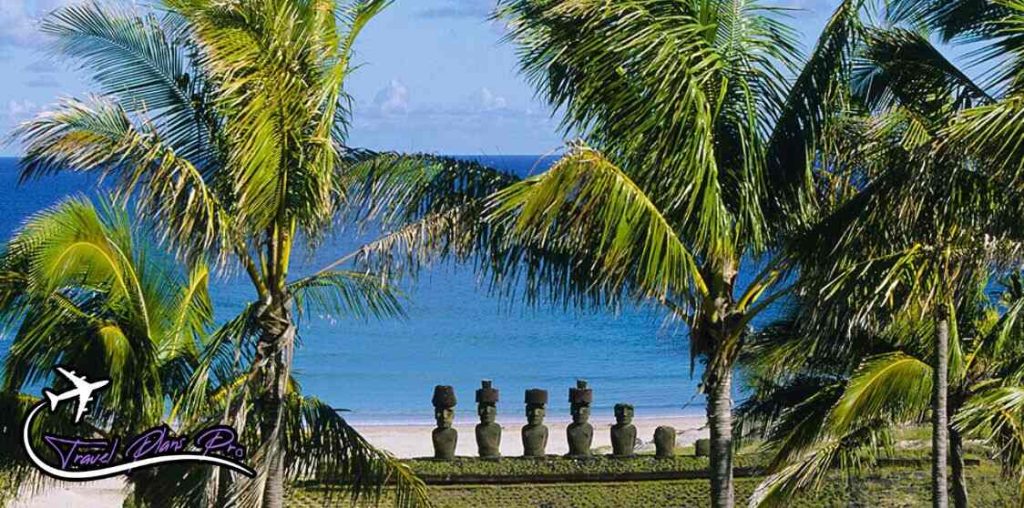
Local legend has it that the very first settlers of the island landed on Anakena Beach. Today this beautiful golden sand palm fringed stretch is a great spot for sunbathing and swimming and also harbors some intriguing moai.
Rano Kau and Orongo
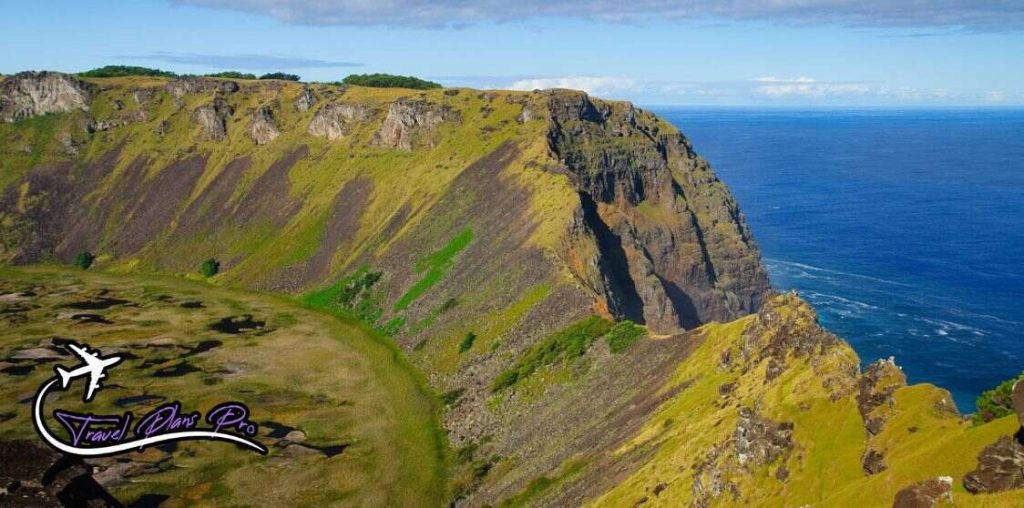
On the south coast of Easter Island lies the dramatic flooded crater of the extinct volcano, Rano Kau. On one side of the volcano, a chunk is blown off by a historic eruption, leaving a gaping space that offers magnificent views of the ocean beyond. Nearby the volcano are the clifftop ruins of Orongo village. There you will find an impressive collection of petroglyphs, showcasing the Birdman Ceremony. The Birdman Ceremony was a competition amongst the chiefs of different kin groups. Each chief would put forward an athletic young man to complete in the ceremony on their behalf and win them authority over the island for the entire coming year.
Tahai
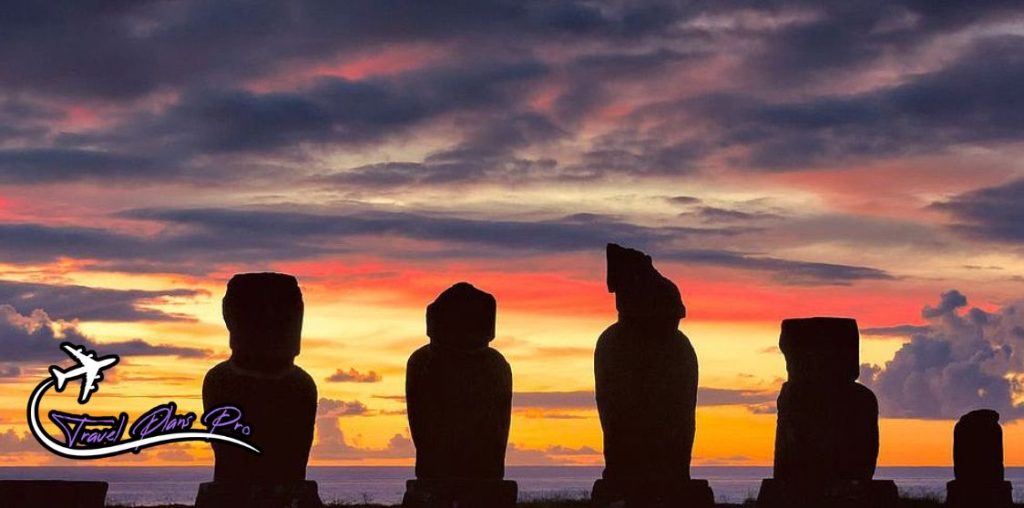
Tahai lies a short walk north of Hanga Roa. It is a ceremonial spot with a selection of moai and ahus. Every day, in the late afternoon crowds of tourists and locals gather there to watch the mesmerizing sunset. Nearby Tahai is the Father Sebastian Englert Archeological Museum, which provides a great overview of the Island’s culture and its rich history.
Easter Island – Special Events and Festivals
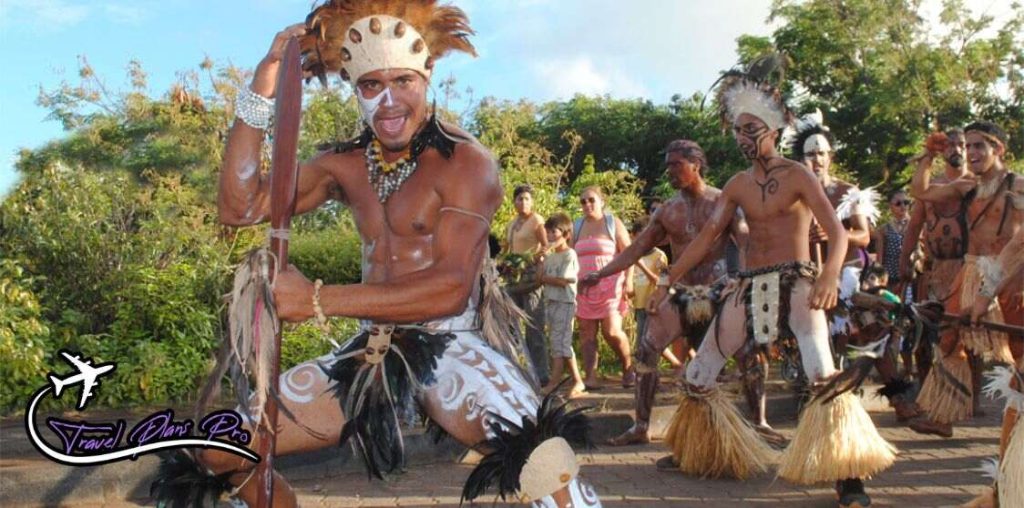
One of the best times to visit the island is during one of its festivals. However, during these festive periods the price of flights, car hires, and accommodations skyrockets. Therefore, if you want to witness these events without breaking the bank, it is best to book everything well in advance. Let’s take a look at the key festivals of the island:
Tapati Rapa Nui, early February – This event lasts for a period of two weeks and is the biggest fiesta of the year. Tapati Rapa Nui celebrates the Rapa Nui culture and history through the selection of the Queen of the Tapati, canoe and horse races, music and dance performances, feasting, statue carving, and much more.
Semana Santa, March/April – Holy Week also known as Easter celebrations on the island are centered around a beautiful little church in Hanga Roa.
Dia de la Lengua Rapa Nui, early November – Dia de la Lengua Rapa Nui is a celebration of the Rapa Nui language. The locals and tourists celebrate the local tongue with a variety of cultural events.
Where to Stay on the Island?
Easter Island harbors a wide range of hostels, campsites, guesthouses, and mid and top-end hotels. These accommodations are more on the expensive side as compared to their counterparts on the mainland. Almost all of these are located either inside or around Hanag Roa, except for the luxurious Explora Rapa Nui, which lies 8km east of town. For backpackers and budget travelers, the best accommodation is the Camping Mihinoa, whereas the Hostal Tojika is a mid-range choice. Regardless of where you stay, it is best to book the place in advance, as they fill up pretty quickly, especially near the time of local island festivals.
Cost of Visiting Easter Island
Visiting Easter Island is not cheap, from the flight rate to the accommodation, every step of the way you will have to empty out your pockets. If you are booking a four-night stay in a budget accommodation, then the price of the visit will most probably come out to be:
| Expense | Cost (daily for two people) |
| Cost of mandatory guide | $80 USD (private guide); $360 USD (tour agency) |
| Accommodation | Double room $35,000 CLP ($45 USD)-$59,000 CLP ($74 USD)* |
| Food | $20,000 CLP-$32,000 CLP ($24 USD-$40 USD) |
| Transportation | If you hire a private guide, you will also need your own transport. The cheapest is a Suzuki Jimny for $90,000 CLP ($114 USD) per day |
| Total per day | $119,000 CLP ($149 USD) + $90,000 CLP ($114 USD) for transport |
| National park fee | $126,000 CLP ($160 USD) |
| Total for two people for four days (including three full-day guided tours) | $770,000 CLP ($973 USD) + flights |
For a four-night stay of two people in a mid-range accommodation the cost will come out to be:
| Expense | Cost (daily for two people) |
| Cost of mandatory guide | $80 USD (private guide); $360 USD (tour agency) |
| Accommodation | $85,000 CLP – $92,000 CLP ($105 USD – $115 USD) |
| Food | $32,000 CLP ($40 USD – $60 USD) |
| Transportation | If you hire a private guide, you will also need your own transport. The cheapest is a Suzuki Jimny for $90,000 CLP ($114 USD) per day |
| Total per day | $879,000 CLP ($1,095 USD) + $90,000 CLP ($114 USD) for transport |
| National park fee | $126,000 CLP ($160 USD) |
| Total for two people for four days (including three full-day guided tours) | $962,000 CLP ($1,217 USD) + flights ($1,370,000 ($1,715 USD) + flights if you choose a tour operator, rather than a private guide |

